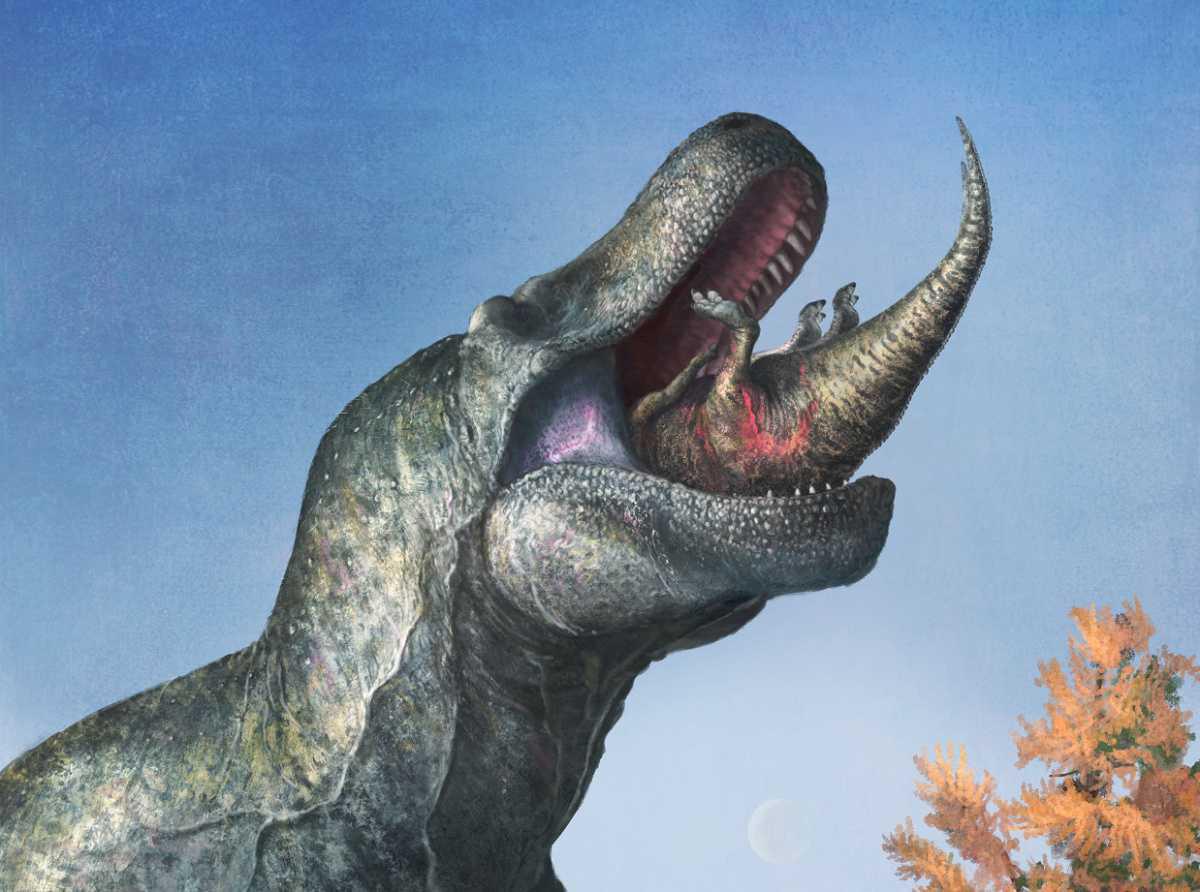According to a recent study, the portrayal of predatory dinosaurs like the Tyrannosaurus rex in movies such as Jurassic Park, with permanently exposed teeth, may not be accurate. Instead, it is believed that these dinosaurs had scaly, lizard-like lips that covered and sealed their mouths.
The depiction of theropod dinosaurs, which includes two-legged carnivores and apex predators such as the T. rex and Velociraptor, as well as birds, has been the subject of debate among researchers and artists. One of the key points of contention has been whether these dinosaurs had lipless mouths with upper teeth that were always visible and hung over their lower jaws, similar to the mouth of a crocodile.
A team of international researchers has challenged commonly held beliefs about the appearance of predatory dinosaurs. They suggest that these dinosaurs had lips similar to lizards and the tuatara, a rare reptile found only in New Zealand that is the last surviving member of a group of reptiles that existed during the time of the dinosaurs.
In their extensive study, the researchers analyzed the structure of teeth, wear patterns, and jaw morphology of various reptile groups with and without lips. Their findings suggest that theropod mouth anatomy and function were more similar to lizards than crocodiles. As a result, it is believed that these dinosaurs had scaly lips covering their teeth, resembling the oral tissues of lizards.
However, it should be noted that these lips were not muscular, unlike those found in mammals. While reptile lips cover their teeth, they cannot move independently, meaning they cannot curl back into a snarl or make other similar movements commonly associated with human or mammalian lips.
Derek Larson, a co-author of the study and the Collections Manager and Researcher in Palaeontology at the Royal BC Museum in Canada, stated that when comparing extinct animals like dinosaurs to their closest living relatives, it is challenging because their closest relatives have been evolutionarily distinct for hundreds of millions of years and are incredibly specialised today.
According to Larson, theropod teeth are remarkably similar to those of monitor lizards. The teeth function in much the same way, from the smallest dwarf monitor to the Komodo dragon. As a result, extinct animals like theropod dinosaurs can be compared favourably to monitors based on this similarity of function, despite not being closely related.
Another co-author, Dr Mark Witton from the University of Portsmouth, noted that the depiction of lipless dinosaurs in art has been a topic of debate for many years. However, during the 1980s and 1990s, this depiction became more prevalent in popular culture, particularly through films and documentaries like Jurassic Park and Walking with Dinosaurs. This was likely due to a preference for a new, ferocious-looking aesthetic rather than a shift in scientific thinking. The study overturns this popular depiction by proposing that these dinosaurs had lizard-like lips covering their teeth, indicating that many beloved dinosaur depictions, including the iconic T. rex from Jurassic Park, are incorrect.
The findings, which were published in the journal Science, indicate that there were significant differences in tooth wear between lipless animals and carnivorous dinosaurs. The research also revealed that the size of dinosaur teeth, relative to skull size, was similar to that of modern lizards, suggesting that their teeth were not too large to be covered by lips.
Moreover, the distribution of small holes surrounding the jaws that provide nerves and blood to the gums and tissues around the mouth was more similar to that of lizards than crocodiles. Additionally, computer models of lipless theropod jaws showed that the lower jaw would have to crush jaw-supporting bones or dislocate the jaw joint to seal the mouth.
Kirstin Brink, co-author of the study and Assistant Professor of Palaeontology at the University of Manitoba, explained that teeth that are not covered by lips are at risk of drying out and can sustain more damage during feeding or fighting, as observed in crocodiles but not in dinosaurs. She noted that dinosaur teeth have thin enamel, whereas mammal teeth have thick enamel, with some exceptions. Crocodile enamel is slightly thicker than dinosaur enamel but not as thick as mammalian enamel. Some mammal groups have exposed enamel, but their enamel is modified to withstand exposure.
Thomas Cullen, Assistant Professor of Paleobiology at Auburn University and study lead author, said: “Although it’s been argued in the past that the teeth of predatory dinosaurs might be too big to be covered by lips, our study shows that, in actuality, their teeth were not atypically large. Even the giant teeth of tyrannosaurs are proportionally similar in size to those of living predatory lizards when compared for skull size, rejecting the idea that their teeth were too big to cover with lips.”
According to the researchers, the findings offer fresh perspectives on the reconstruction of soft tissues and physical characteristics of extinct species, providing essential information on their feeding habits, dental health, and evolution and ecology as a whole.
It is worth noting that the study does not suggest that all extinct animals lacked soft-tissue coverings over their teeth. Some species, such as saber-toothed mammals or marine and flying reptiles with extended interlocking teeth, likely had exposed teeth.
Header Image Credit : Mark Witton


